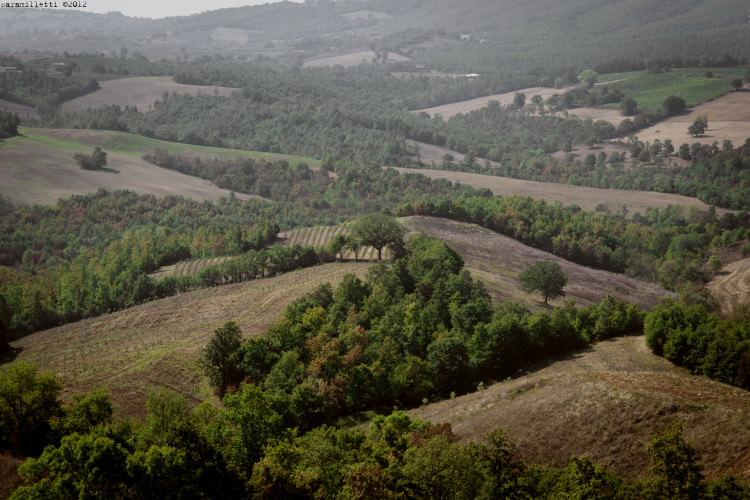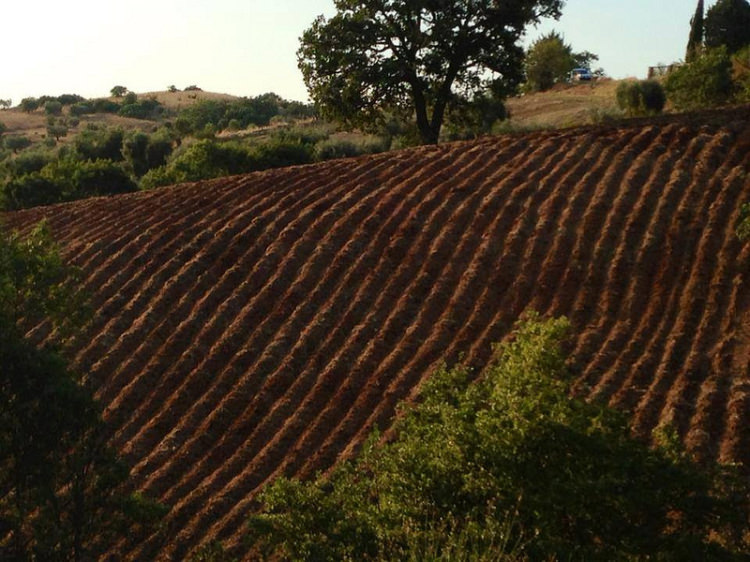I’ve always enjoyed the forms of the hills, they enabled me look at various horizons, perhaps it is a necessity derived from a childhood spent in these places.But when I was in the plains I struggled to orientate myself and just by observing the path of the river I could envisage spaces that were hidden from view , and then eventually with time even the plains became more ‘ spectacular ‘ but only occasionally. The need to reach a summit has been a constant desire for me , and so when I arrived to Maliosa and reached Montecavallo I could enjoy the spectacular views ranging from the Tyrrhenian Sea ,the Maremma , Saturnia, Amiata and Viterbo.

I do not know how many times I came back to the summit and the snapshots that I took , almost all the same and yet so different . The farmland scenes more attractive to me, were the wooded areas of dissimilar designs that cover a large part of the territory.
This scene also led me to think about the forest in its primordial origin. The first land plants appeared about four hundred million years ago and their colonisation of the territories has continued producing more complex biological systems inside them. Since his emergence, man has always intervened to limit the plants, preventing them from taking over “his” agricultural land. The agriculture that we observe is still the result of the competition between man and the trees, our whole history illustrates this union, the forest is quintessential nature and the base of the preparatory ecosystem to cultivate. The vine is a liana which once shared a space in the forest attached to other trees. Some examples of ”Vitis silvestris” attached to trees are occasionally present in the Maremma especially near streams and also at La Maliosa, there are these ancient relics .
Man has ‘ brought ‘ out of the wood these vines, selecting within the genus Vitis ,and above all was concerned about good and abundant fruit ; these “Tutor trees” have been replaced by structures with the same purpose of supporting the behavioural growth of liana.
The vine begins a long phase of shaping and pruning ( the vine does not heal its wounds , it was not designed to receive cuts ) that limits its viability to few decades .
In most viticultures ,non communicating rectilinear rows are realised and plants are trained along supports : often the rows are realised according to the maximum slope of the terrain.
At Maliosa new vineyards are being implemented on three separate areas distinguished by geology and topography.

This choice is aimed at enhancing the scenic beauty , to valorise the historic vines, and to protect the value of the land, the harmony of plant architecture that maximises the physiology of the plant for best results. It is also an attempt to get closer to the bordering forest and re-establish a dialogue and an awareness that the forest is the matrix of agriculture.





